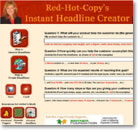With all the attention that's paid to increasing traffic to your website or blog, don't forget the impact that social-bookmarking services like Digg, Technorati, Yahoo Buzz, and others can have on your number of visitors.
Why? Well, it's not as simple as adding keywords to your site or paying for clicks on AdWords. Building traffic by using these services involves 1) providing valuable, relevant content and 2) being a good "Netizen" - citizen of the Internet.
If that sounds alarming, let me assure you - the rewards can easily pay off your effort!
So let's start with a few questions.
- Do you (like many people) follow the news primarily online?
- Do you have certain issues, causes, or businesses you follow in the news?
- Do you wish you could see more about your favorite topics, or more from writers who see the world as you do?
These services allow you to "bookmark" an article, blog post, YouTube video, or just about anything else as a sign of your agreement, enjoyment, or approval. This equates to a virtual vote for the item, a sign of your interest. As other people cast their votes along with yours, Google, Bing, Yahoo, etc., take notice, and - surprise - the item rises in the search engine rankings.
Not only that - it is rising twice over: first with the Digg posting, and also with its own URL (web address). So someone searching for information on that topic will see that page listed not once, but twice. If it has been bookmarked through other services, their listings may also show up individually.
Are you beginning to see the potential? If, for example, you're worried about the number of articles contesting the reality of global warming, you can take action by bookmarking the best articles you can find that support the idea. You can do this in multiple services (Care2.com is particularly good for this purpose) and your votes will draw the attention of other social bookmarkers, who may add theirs. And - thanks to your combined efforts - those articles will rise in the search engine rankings, and attract yet more attention

You can bookmark blog posts, news articles, YouTube videos or just about anything else. Just look for widgets like the one at right, the Digg widget at the end of this post, or other widgets labeled "Share". You can even bookmark websites, though that is not the best use of these services if the site content does not change frequently.
Can you bookmark your own website? Yes - but it's not the best strategy; by and large, social bookmarkers don't appreciate blatant commercial self-promotion. If you want to increase traffic to your website, the best way is through providing high-quality, relevant content in a marketing article or blog post, and providing a link to your website (click here for one example). Then bookmark the article or post just once per service, to submit it to the system.
There are three key rules of "Netiquette" to remember when you're bookmarking your own content....
- Digg unto others as you would have them Digg unto you - bookmark others' work liberally so they will be more inclined to bookmark you. It's a five-second process - clicking the widget, entering the title and a brief description, and executing your vote - and it's warmly appreciated by the author.
- A"Digger" who Diggs only his/her own content is quickly identified as a spammer. Submitting your content is OK - and your credibility in each bookmarking community rests on your also voting for others' content.
- Finally, trust the process. Provide a social bookmarking widget (or two, or three) to make it easy for your readers to bookmark your content. It's OK to tell a few friends about your newly uploaded content and invite them to bookmark - but don't attempt to game the system by telling all your employees to go online and bookmark your company blog's latest post. Digg, etc., will quickly catch on and you will be penalized for fraud. If your content has value, it will rise on its own merits; if not - well, it won't.










